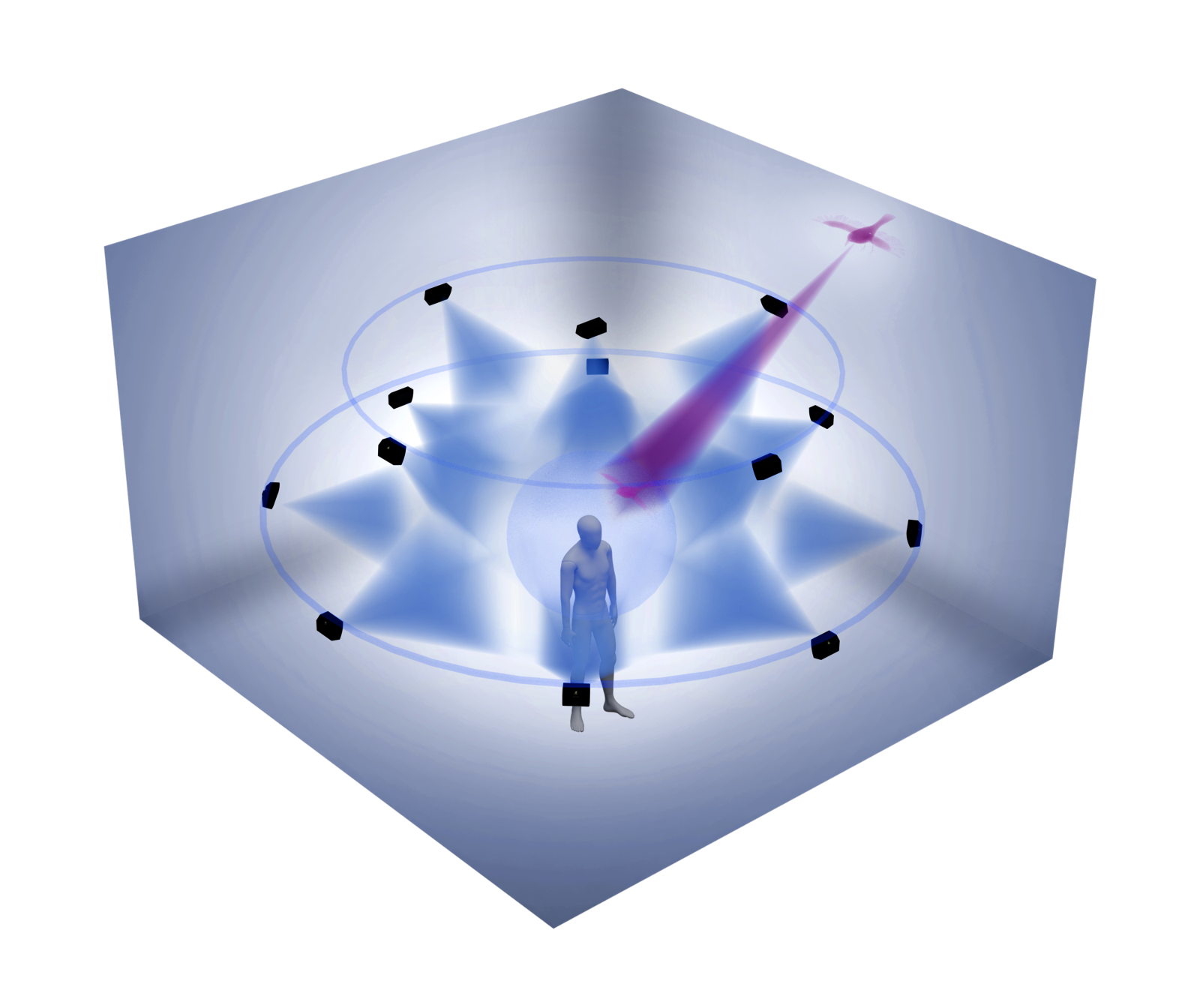The ‘Pan Immerse 4D Audio’ system was recently honoured by the community and a jury of experts as the best sound system with the AVard 2024.
For the AVard in the ‘Entertainment & Infotainment’ category, product solutions from the AV industry were sought that support the visitor experience to a high degree in event venues, theatres and stadiums, but also excel in museums and exhibitions, where multimedia concepts are used to convey knowledge in an attractive way.
In all these areas of application, Pan Immerse 4D Audio is the right choice for an unforgettable, sensually engaging acoustic experience thanks to its easy handling and uncomplicated rendering and control of audio objects.


The audio object is transformed into an adjustable point source. The "sweet spot" known and appreciated from stereo becomes omnipresent. Perfect immersion.
This is achieved with the help of wave field synthesis. Wave field synthesis (WFS) is an advanced audio technology used in the field of immersive audio to create a realistic and spatial sound experience. It is based on the physical principles of wave acoustics and enables the precise control of sound fields.
The flexibility created by wave field synthesis makes it possible to create customized and immersive audio experiences for various applications such as concerts, theater performances, movies, virtual reality and more.
The optional adjustment of the room sound (through Pan ACS) to match the room architecture and the application, Pan 4D brings the 4th dimension - time - into play alongside the 3 dimensions. This means that auditory lenses can not only provide three-dimensional fascination in the room, but are also perceived by the listener in a highly realistic and emotional way.
The heart of the Spatial Audio System - Pan Immerse 4D Audio - is a coordinated hardware and software system designed for maximum uptime and reliability. Pan Immerse 4D Audio is available in three versions to meet individual requirements ranging from a small number of channels including playback engine to a system with 160x128 I/O including playback engine for live sound applications.
In addition to classic established multi-channel formats such as 7.1, a wide variety of speaker arrangements for spatial audio applications with up to 128 speaker channels are also supported.
The flexible platform for 4D audio serves conceivable passive, active and interactive scenarios - there are virtually no limits to the imagination. The goal, however, is to hear, see and feel. An experience that immerses you in natural-sounding sounds.
Loudspeakers are necessary to make this experience possible. Speakers that are distributed around the room according to the application. It quickly becomes clear that the number of these is significantly higher than is the case with stereo operation. Since, depending on the application, each individual loudspeaker element - whether array or point source - can play a smaller role in relative terms, lower sound pressure levels, i.e. less volume and even a smaller size, may be required: The initial shock can therefore be lessened. Furthermore, the first wave of immersive sound systems that will have a real impact on concert halls will have a 180° orientation - not 360° as is often assumed.
Pan Acoustics offers a range of active and passive loudspeakers that perfectly support these scenarios. This means that another important need can be met: Speakers are chosen according to the application and are matched in terms of size and color so that they appear as inconspicuous as possible in the room. Planning, setup and the corresponding coordinated components: everything from a single source!
Beam steering (directional audio) is a great way to increase immersion by providing auditory support for visual elements.
For example, directional speakers in museums can offer visitors a completely new sound experience. They focus a narrow beam of sound on the listener so that only they hear it instead of it being spread throughout the room.
In this way, visitors can be "surprised" even without visual elements:
Imagine using them in a haunted house attraction to give people the feeling that they are being haunted by something, even if there is nothing there.
A truly spooky experience.
Tracking visitors or actors/actresses can be used, for example, to create the impression that a character from the story being presented is speaking directly to the visitor or that they are listening to a conversation between two people from a different time, including the correct localization of the audio source.
Various positioning and localization systems can be used here to determine the location of the visitor or performer and position the corresponding audio object. Visitors can be immersively integrated into the storytelling via tracking.
Imagine walking through an exhibition about Ancient Egypt while a pharaoh visually accompanies you across the LED wall and tells you - always in the correct position - something about the exciting history of Egypt.
If you stop, the pharaoh also stops and moves on with you as soon as you continue walking.
There are a number of other ways that directional speakers can enhance the overall visitor experience, such as guiding visitors through the museum and providing them with more information about the artworks as they visit. It also eliminates the need for permanently installed headphones, which can be unhygienic and expensive to maintain. A major advantage over conventional loudspeakers is the reduced noise pollution, so that the tranquillity and ambience of the space is maintained.